| Columns Retired Columns & Blogs |
PSB Stratus Gold loudspeaker 1991 Measurements
Sidebar: 1991 Measurements
Fig.1 shows the impedance (magnitude and phase) of the PSB. Note that it does drop below 4 ohms from 70 to 400Hz. This indicates that some caution should be exercised in the choice of amplifier, but should not cause a problem with most well-designed separates. The port is tuned to about 27Hz, shown by the minimum at that frequency.
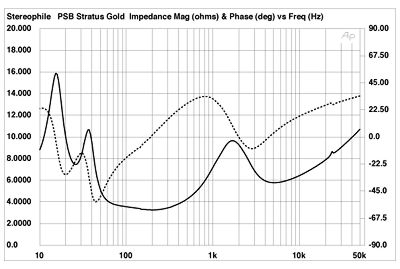
Fig.1 PSB Stratus Gold, electrical impedance (solid) and phase (dashed) (2 ohms/vertical div.).
Fig.2 is the (MLSSA-derived) impulse response of the PSB. Visible is a small amount of ultrasonic ringing, common with metal-domed tweeters. The impulse response for the woofer alone (not shown) indicates that the woofer is connected in inverse polarity and its output lags that of the midrange/tweeter by 0.9ms. Fig.3 shows the step response.
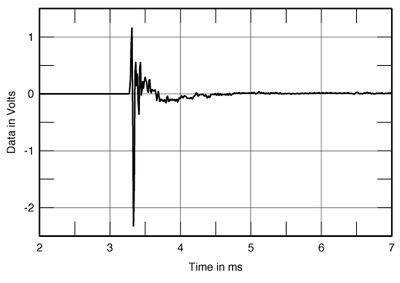
Fig.2 PSB Stratus Gold, impulse response on midrange axis at 48" (5ms time window, 30kHz bandwidth).
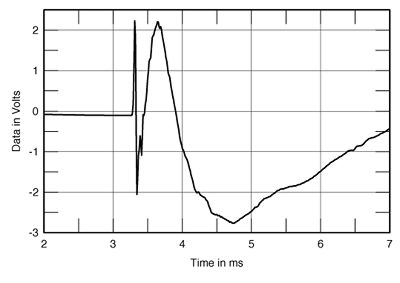
Fig.3 PSB Stratus Gold, step response on midrange axis at 48" (5ms time window, 30kHz bandwidth).
Fig.4 shows the separate quasi-anechoic responses of the port, the woofer, and the midrange/tweeter, driven from their separate bi-wire input terminals. The stop-band response (above crossover) of the woofer is a bit ragged as it dies out, but this did not translate into audible problems. Nor did, surprisingly, the slight raggedness in the response noted from 3-5kHz. Note that the deviations are primarily sharp dips, rather than peaks, in the response (response dips are generally less audible). Fig.5 looks the same above 1kHz because it is derived from the same measurement—the 90Hz-resolution FFT response, at 48" and tweeter height. Averaging the curves taken on this axis across a 30 degrees lateral window showed very little change from the on-axis response, indicating that the PSB offers a smooth wide dispersion in the treble.

Fig.4 PSB Stratus Gold, acoustic crossover on midrange axis at 48", corrected for microphone response, with the nearfield midrange, woofer, and port responses plotted below 500Hz, 3kHz, and 200Hz, respectively.
The remainder of fig.5 comes from three different measurements: from 1kHz down to 150Hz is the on-axis response at 48" taken with 15Hz resolution; from 150Hz down (primary curve) is a nearfield woofer measurement taken with the Audio Precision System One; and the lower, secondary curve from the nearfield port measurement. (The output of the port has been scaled so that its output maximum matches the maximum nearfield output of the woofer.) Note the slight rise in the woofer's output below 100Hz, which may relate to the fullness and warmth noted in this region (but it's always difficult to isolate the contribution of the room—not included in the near-field measurement—in making such interpretations).
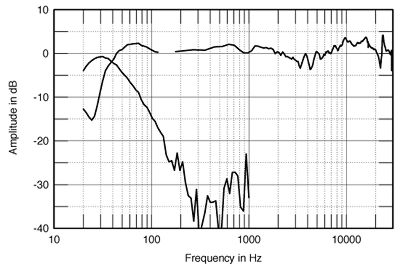
Fig.5 PSB Stratus Gold, anechoic response on midrange axis at 48", averaged across 30 degrees horizontal window and corrected for microphone response, with the nearfield woofer and port responses plotted below 300Hz.
The gently elevated response from about 200Hz to 2kHz—the region covered by the midrange driver—would be consistent with my feeling that the PSB was more up-front than laid-back in perspective. The major deviation noted in fig.5 is the rising response from 5kHz to 17kHz. Audibly, the rise was far more innocuous than it appears—the rise is smooth and similar to that from many moving-coils. (Needless to say, the cumulative effect of using a moving-coil pickup also having such a rise with the PSB should be avoided.) But it certainly is consistent with my observations on the Stratus Gold's HF response character: open, airy, and detailed, though occasionally too much so on some program material.
Fig.6, the cumulative spectral-decay (waterfall) plot, shows the ultrasonic tweeter resonance above 20kHz. The resonance mode at about 16kHz is from the test set computer monitor (the dark ridge which extends to 2.36ms), but above that frequency there also appear to be two resonances associated with the tweeter's response peak. A small amount of HF hash, visible around 10kHz, did not relate to any audible phenomena. Other than that, the decay above 3kHz or so is notably clean.—Thomas J. Norton
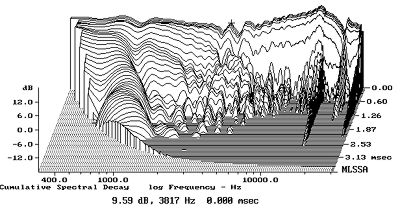
Fig.6 PSB Stratus Gold, cumulative spectral-decay plot at 48" (0.15ms risetime).
- Log in or register to post comments




































